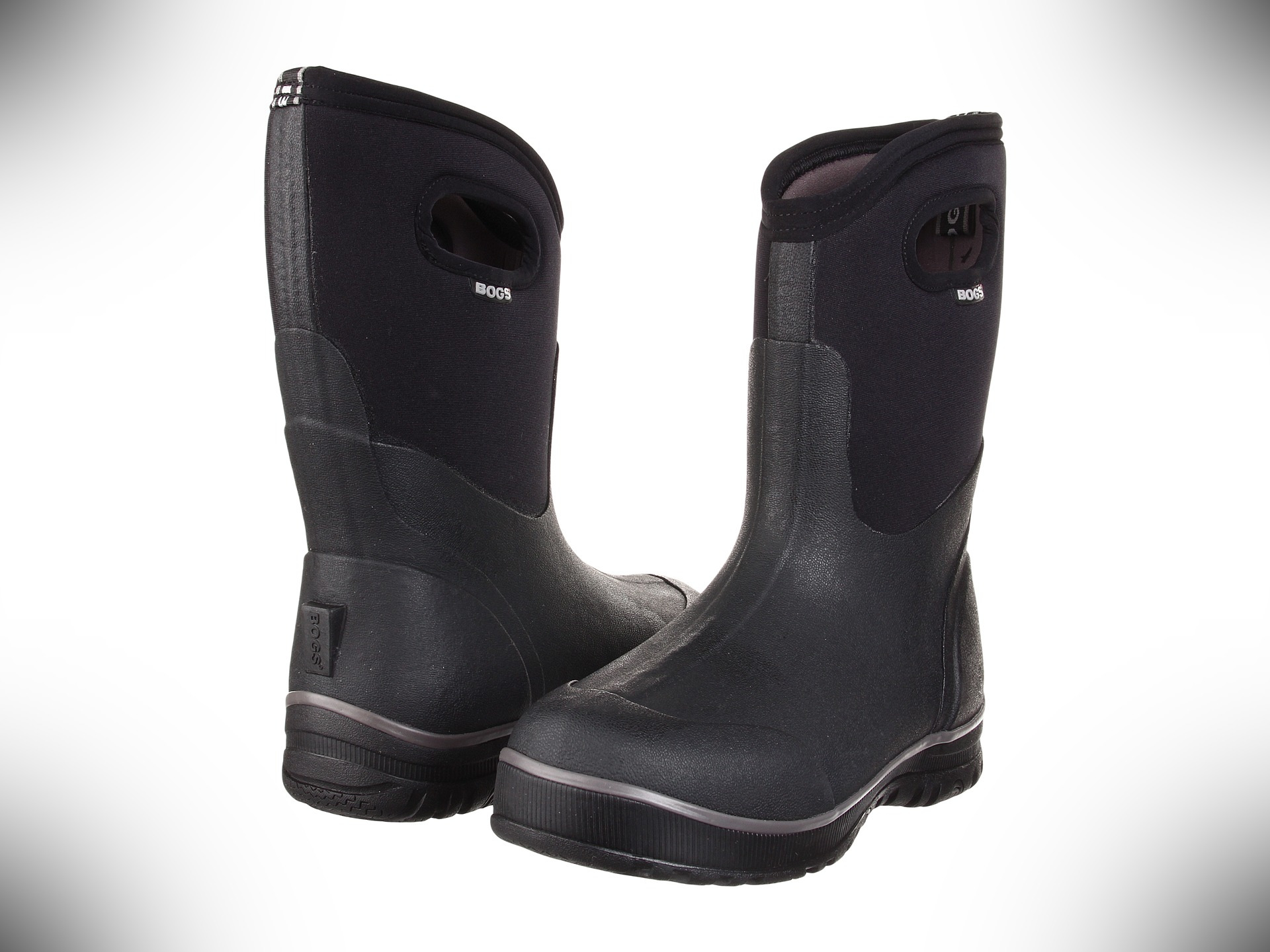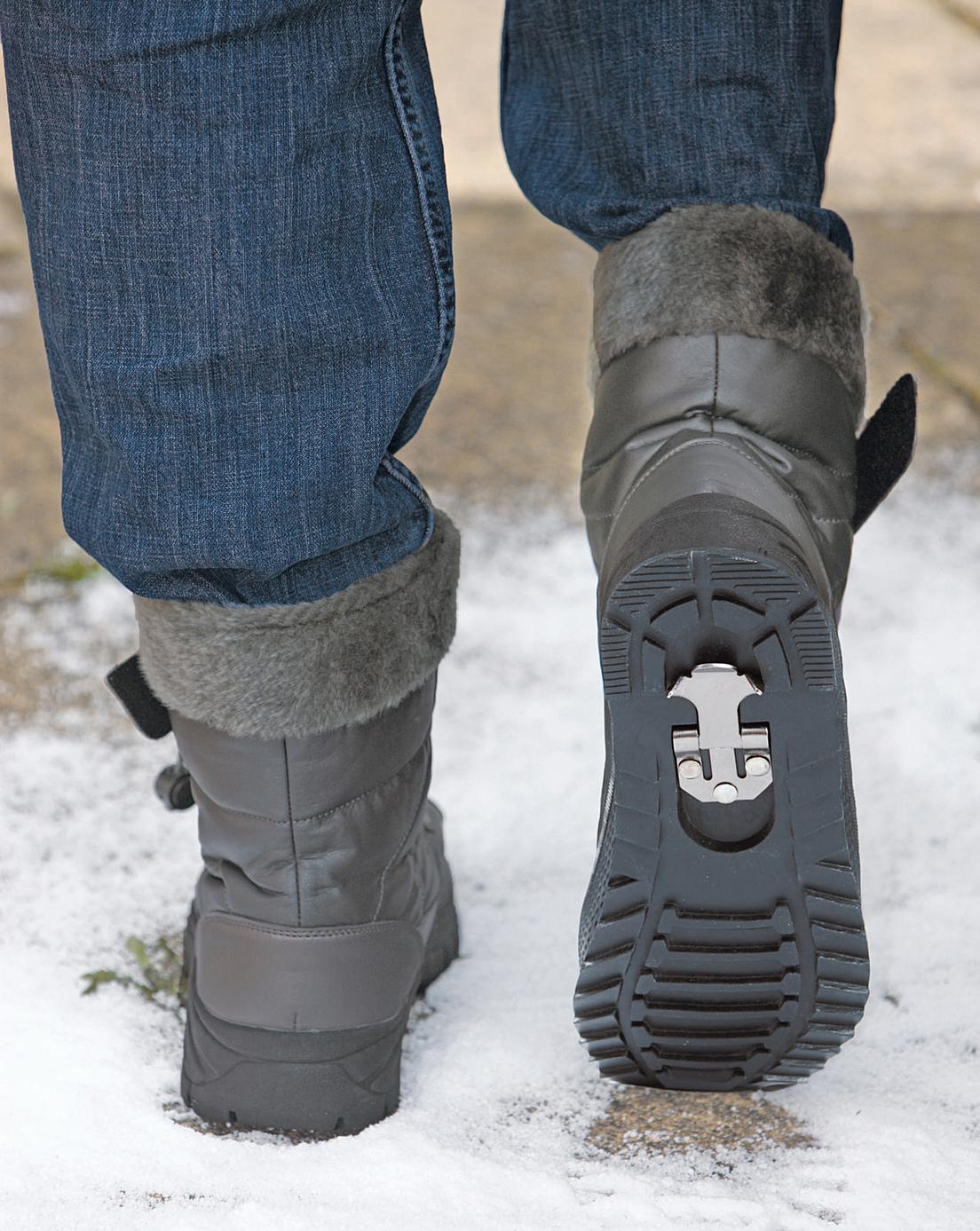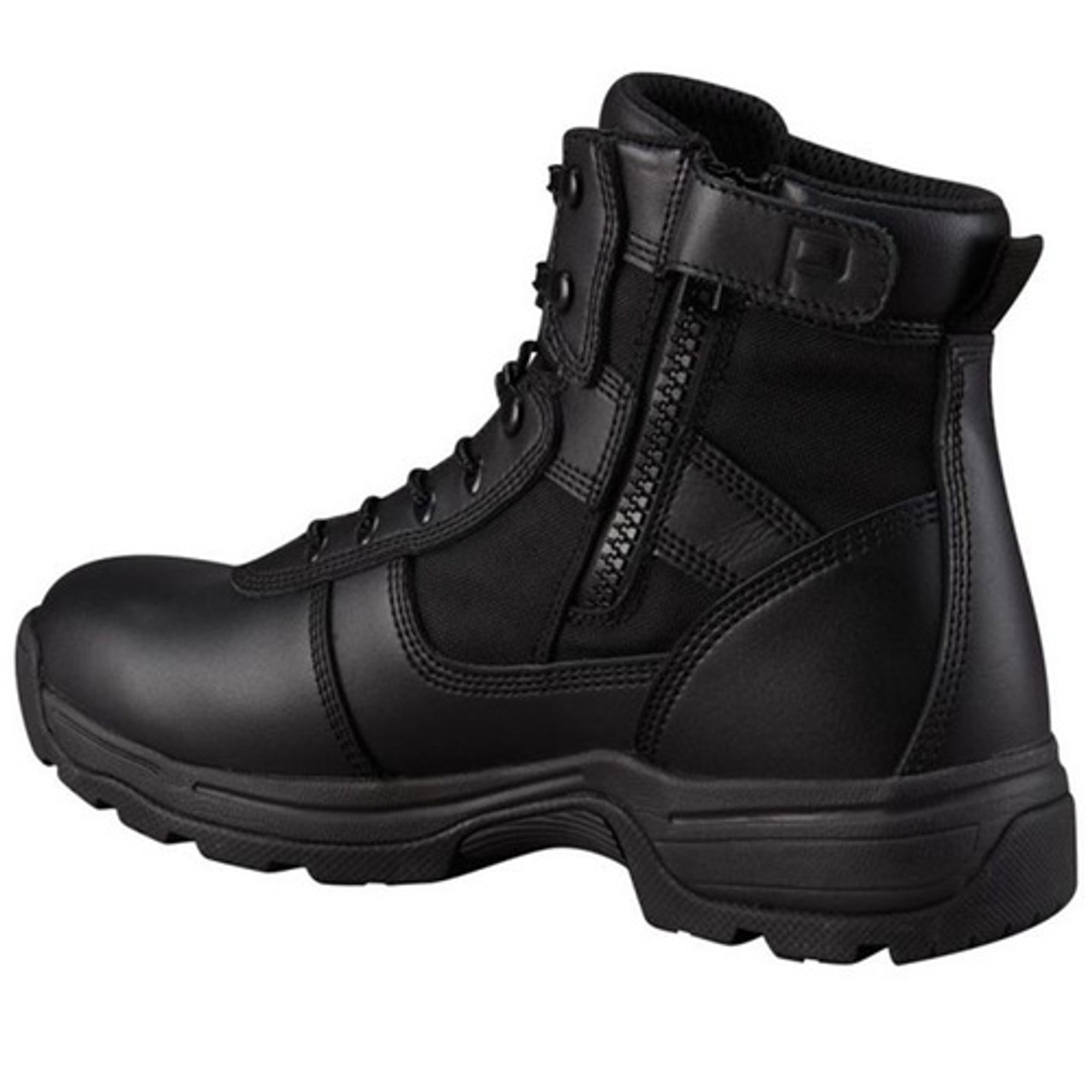Why Water and Slip Resistant Boots are a Must-Have for Any Job
In the workplace, slips, trips, and falls are a major concern, resulting in thousands of injuries and fatalities every year. According to the Bureau of Labor Statistics, these accidents are a leading cause of workplace injuries, with the highest incidence rates in industries such as construction, manufacturing, and healthcare. One of the most effective ways to mitigate this risk is by wearing water and slip resistant boots, which are specifically designed to provide traction on slippery surfaces.
Water and slip resistant boots are not just a luxury, but a necessity for many workers. In construction, for example, workers may encounter wet and oily surfaces, while in healthcare, floors can be slippery due to water, cleaning products, or other substances. Without proper footwear, workers are at risk of slipping and falling, which can lead to serious injuries, downtime, and even long-term disabilities. By wearing water and slip resistant boots, workers can significantly reduce this risk and perform their jobs with confidence.
The importance of wearing water and slip resistant boots cannot be overstated. In addition to the safety benefits, these boots can also improve productivity and efficiency. When workers feel secure and confident in their footwear, they can focus on their tasks without worrying about slipping or falling. This can lead to increased productivity, better quality work, and a more positive work environment. Furthermore, water and slip resistant boots can also reduce the financial burden of workplace accidents, which can be significant in terms of medical costs, lost productivity, and workers’ compensation claims.
How to Choose the Right Water Resistant Boots for Your Needs
When it comes to selecting water and slip resistant boots, there are several factors to consider to ensure you get the right pair for your job or activity. With so many options available, it can be overwhelming, but by understanding the key features and benefits, you can make an informed decision.
Material is a crucial consideration when choosing water and slip resistant boots. Look for boots made from high-quality, water-resistant materials such as rubber, polyurethane, or PVC. These materials will provide a waterproof barrier, keeping your feet dry and comfortable in wet conditions.
Tread pattern is another essential feature to consider. A good tread pattern should provide traction on slippery surfaces, while also being self-cleaning to prevent debris buildup. Look for boots with deep lugs and a unique tread pattern designed to grip slippery surfaces.
Ankle support is also critical in water and slip resistant boots. A boot with good ankle support will provide stability and prevent ankle rolls, reducing the risk of injury. Look for boots with high-cut ankle designs and sturdy materials that provide excellent support.
Certification standards are also important to consider. Look for boots that meet or exceed industry standards such as ASTM or EN ISO. These standards ensure that the boots meet certain requirements for slip resistance, water resistance, and other safety features.
Finally, consider the specific requirements of your job or activity. If you work in a hazardous environment, you may need boots with additional features such as steel toes or puncture resistance. If you work in a cold environment, look for boots with insulation and thermal protection.
By considering these factors, you can choose the right water and slip resistant boots for your needs, ensuring you stay safe and productive on the job.
The Science Behind Slip Resistance: Understanding the Technology
Slip resistant boots are designed to provide traction on slippery surfaces, but have you ever wondered how they actually work? The technology behind slip resistant boots is based on the principles of friction and surface chemistry.
The key to slip resistance lies in the tread pattern and material of the boot. The tread pattern is designed to create a large surface area in contact with the ground, increasing the frictional force between the boot and the surface. This is achieved through the use of deep lugs, grooves, and channels that allow for maximum contact and grip.
The material used in the construction of the boot also plays a critical role in slip resistance. Rubber and polyurethane are common materials used in slip resistant boots, as they provide a high level of friction and grip on slippery surfaces. These materials are often formulated with special additives that enhance their slip-resistant properties.
In addition to the tread pattern and material, the surface chemistry of the boot also plays a role in slip resistance. The surface of the boot is often treated with special coatings or finishes that enhance its grip on slippery surfaces. These coatings can include materials such as silica, alumina, or other abrasive particles that increase the frictional force between the boot and the surface.
Water and slip resistant boots take this technology to the next level by incorporating additional features such as drainage channels and breathable membranes. These features allow water to escape from the boot, reducing the risk of slipping and falling on wet surfaces.
By understanding the science behind slip resistant boots, it’s clear that they are an essential piece of personal protective equipment (PPE) for anyone working in hazardous environments. By providing traction and grip on slippery surfaces, water and slip resistant boots can help prevent accidents and ensure a safe working environment.
Top Picks: Water Resistant Boots for Specific Industries and Activities
When it comes to choosing the right water and slip resistant boots for your job or activity, it can be overwhelming with the numerous options available. To help you make an informed decision, we’ve compiled a list of top picks for specific industries and activities.
For construction workers, the Timberland PRO Boondock Boot is a top choice. This boot features a rugged outsole with deep lugs for maximum traction on slippery surfaces, as well as a breathable membrane to keep feet dry and comfortable. The Boondock Boot also meets or exceeds ASTM standards for slip resistance and ankle protection.
For warehouse workers, the Dr. Martens Ironbridge Boot is a great option. This boot features a slip-resistant outsole with a unique tread pattern designed to grip slippery surfaces, as well as a comfortable and breathable upper. The Ironbridge Boot is also certified to EN ISO 20345 standards for slip resistance and ankle protection.
For healthcare professionals, the New Balance 623v3 Boot is a top pick. This boot features a slip-resistant outsole with a unique tread pattern designed to grip slippery floors, as well as a comfortable and breathable upper. The 623v3 Boot is also certified to ASTM standards for slip resistance and ankle protection.
For outdoor enthusiasts, the Merrell Moab 2 Mid Waterproof Boot is a great option. This boot features a waterproof membrane and a rugged outsole with deep lugs for maximum traction on slippery surfaces. The Moab 2 Mid Boot is also certified to ASTM standards for slip resistance and ankle protection.
These are just a few examples of top picks for specific industries and activities. When choosing water and slip resistant boots, it’s essential to consider the specific requirements of your job or activity, as well as the unique features and benefits of each boot.
The Importance of Proper Fit and Maintenance for Water Resistant Boots
Water and slip resistant boots are an essential piece of personal protective equipment (PPE) for many industries, but they can only provide optimal protection if they fit properly and are well-maintained. A proper fit is crucial to ensure that the boot provides adequate support and protection for the foot, while regular maintenance is necessary to extend the lifespan of the boot and prevent wear and tear.
When it comes to fitting water and slip resistant boots, it’s essential to try them on with the same type of socks or footwear that will be worn on the job. This will ensure a comfortable and secure fit, and prevent blisters and discomfort. It’s also important to consider the width and depth of the boot, as well as the height of the ankle support, to ensure that the boot provides adequate protection and support.
In terms of maintenance, water and slip resistant boots require regular cleaning and conditioning to prevent damage and wear. This can be done using a soft-bristled brush and a mild soap solution, followed by a conditioning treatment to keep the leather or synthetic materials supple and flexible. It’s also important to inspect the boot regularly for signs of wear and tear, such as cracks in the sole or tears in the upper, and to replace the boot if necessary.
Breaking in new water and slip resistant boots is also an important part of the maintenance process. This can be done by wearing the boots for short periods of time and gradually increasing the duration, to allow the foot to adjust to the new boot. It’s also important to use a waterproofing treatment on the boot to prevent water from penetrating the materials and causing damage.
By ensuring a proper fit and regular maintenance, water and slip resistant boots can provide optimal protection and support for workers in a variety of industries. This can help to prevent accidents and injuries, and ensure a safe and productive working environment.
Slip Resistant Boots vs. Water Resistant Boots: What’s the Difference?
When it comes to protecting feet from hazardous conditions, two types of boots often come to mind: slip resistant boots and water resistant boots. While both types of boots are designed to provide protection, they serve distinct purposes and offer unique benefits. Understanding the differences between slip resistant boots and water resistant boots is crucial to selecting the right footwear for your specific needs.
Slip resistant boots are designed to provide traction on slippery surfaces, reducing the risk of slips, trips, and falls. These boots typically feature specialized tread patterns and materials that grip surfaces, allowing workers to maintain their footing even in hazardous conditions. Slip resistant boots are often used in industries such as healthcare, food service, and manufacturing, where slippery floors are a common hazard.
Water resistant boots, on the other hand, are designed to keep feet dry and protected from water and moisture. These boots feature waterproof or water-resistant materials, such as Gore-Tex or similar technology, that prevent water from penetrating the boot. Water resistant boots are often used in industries such as construction, fishing, and outdoor activities, where workers are exposed to wet conditions.
While there is some overlap between slip resistant boots and water resistant boots, they are not interchangeable terms. Water resistant boots may not necessarily provide the same level of traction as slip resistant boots, and vice versa. However, some boots may offer both slip resistance and water resistance, making them ideal for workers who face multiple hazards on the job.
In summary, slip resistant boots are designed to provide traction on slippery surfaces, while water resistant boots are designed to keep feet dry and protected from water and moisture. By understanding the differences between these two types of boots, workers can select the right footwear for their specific needs and stay safe on the job.
Real-Life Scenarios: When Water and Slip Resistant Boots Saved the Day
In many industries, water and slip resistant boots are more than just a piece of personal protective equipment (PPE) – they’re a lifesaver. From construction sites to healthcare facilities, these boots have proven time and time again to be a crucial factor in preventing accidents and ensuring a safe working environment. Here are just a few real-life scenarios that demonstrate the importance of water and slip resistant boots:
In 2018, a construction worker in New York City slipped on a wet surface while working on a high-rise building project. Thanks to his water and slip resistant boots, he was able to regain his footing and avoid a potentially deadly fall. The incident was reported to OSHA, which highlighted the importance of proper footwear in preventing workplace accidents.
In a hospital in California, a nurse slipped on a wet floor while rushing to respond to a code blue. Her water and slip resistant boots prevented her from falling, allowing her to continue providing critical care to the patient. The incident was documented in a hospital safety report, which emphasized the importance of slip-resistant footwear in healthcare settings.
In a manufacturing facility in Ohio, a worker was tasked with cleaning up a chemical spill on a slippery floor. Thanks to his water and slip resistant boots, he was able to complete the task without incident, preventing a potential disaster. The incident was reported in a company safety newsletter, which highlighted the importance of proper footwear in preventing workplace accidents.
These real-life scenarios demonstrate the critical role that water and slip resistant boots play in preventing accidents and ensuring a safe working environment. By wearing these boots, workers can reduce their risk of slips, trips, and falls, and focus on getting the job done safely and efficiently.
Conclusion: Prioritizing Safety with Water and Slip Resistant Boots
In conclusion, water and slip resistant boots are a crucial component of any workplace safety strategy. By understanding the importance of wearing these boots, selecting the right pair for your needs, and maintaining them properly, workers can significantly reduce their risk of slips, trips, and falls. Whether you’re working in construction, manufacturing, healthcare, or any other industry, water and slip resistant boots are a must-have for ensuring a safe working environment.
By prioritizing safety with water and slip resistant boots, workers can focus on getting the job done efficiently and effectively, without worrying about the risks of slippery surfaces. With the right boots, workers can have confidence in their ability to navigate even the most hazardous environments, and employers can rest assured that they’re providing a safe and healthy work environment for their employees.
Remember, water and slip resistant boots are not just a piece of personal protective equipment – they’re a lifesaver. By investing in a good pair of water and slip resistant boots, workers can protect themselves from the risks of slips, trips, and falls, and ensure a safe and productive work environment. So why wait? Make the investment in water and slip resistant boots today, and start prioritizing safety in your workplace.







